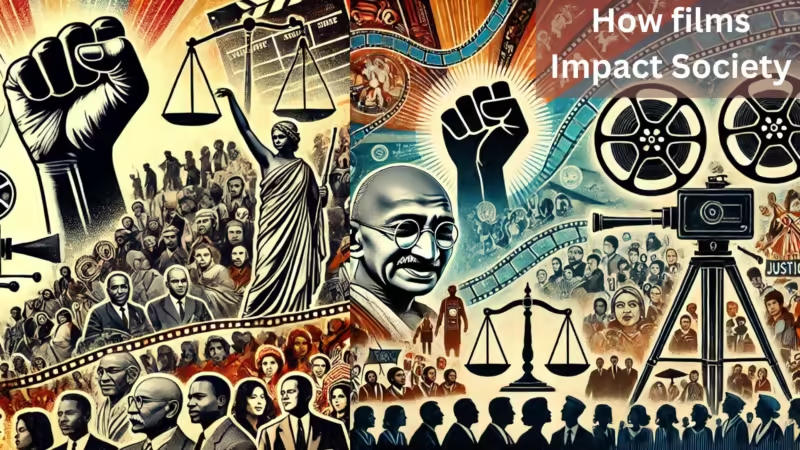Movies have captivated audiences for over a century, and one of the most fascinating aspects of cinema is its wide variety of film genres. From silent films to modern blockbusters, the evolution of film genres reflects society’s ever-changing tastes, values, and technologies. Let’s explore the major shifts in film genres and how they’ve shaped the movie industry into what we know today.
Early Beginnings: The Silent Era
In the early 1900s, the film industry was in its infancy, and silent films were the norm. These films relied heavily on exaggerated facial expressions, physical comedy, and title cards to convey the story. During this time, the comedy and drama genres dominated. Charlie Chaplin, a pioneer of silent comedy, and D.W. Griffith, known for his dramatic epics, were major players in this era.
One of the first major genre innovations came with horror. Films like Nosferatu (1922) introduced the world to cinematic monsters, sparking an early interest in the supernatural. This period laid the foundation for many film genres that would grow and change as technology advanced.
The Golden Age: 1930s to 1950s
The arrival of sound, or “talkies,” in the late 1920s brought a revolution to film. As technology improved, new genres emerged or evolved. The 1930s to 1950s, often referred to as the “Golden Age of Hollywood,” was a time of tremendous growth and experimentation.
Musicals flourished during this time. Films like The Wizard of Oz (1939) and Singin’ in the Rain (1952) captured audiences with their combination of storytelling and song. Westerns also became extremely popular, with stars like John Wayne leading the charge in films like Stagecoach (1939). The genre reflected American ideals of rugged individualism and adventure.
Another significant genre that developed during this period was film noir. Known for its moody atmosphere, crime stories, and moral ambiguity, film noir thrived in the 1940s and 1950s. Movies like The Maltese Falcon (1941) and Double Indemnity (1944) explored the darker side of human nature and influenced many films that followed.
For a deeper look into this era of cinema, check out our articles on classic Hollywood films over at FilmsnMinds.
The Rise of Sci-Fi and Fantasy: 1960s to 1980s
As technology improved, the possibilities of what could be shown on screen expanded, allowing for new genres like science fiction and fantasy to take center stage. The 1960s saw the rise of Star Trek (1966), while Stanley Kubrick’s 2001: A Space Odyssey (1968) revolutionized the science fiction genre with its groundbreaking special effects and complex themes.
In the 1970s and 1980s, action and adventure films became hugely popular. Star Wars (1977) and Indiana Jones (1981) brought together elements of adventure, fantasy, and science fiction, setting the stage for blockbuster films that combined stunning visuals with gripping narratives.
The horror genre also evolved significantly during this time. Directors like John Carpenter (Halloween, 1978) and George A. Romero (Night of the Living Dead, 1968) pushed boundaries with slasher films and zombie horror, both of which continue to influence modern horror movies today.
Looking for more on how sci-fi and fantasy shaped modern films? Explore our detailed reviews on FilmsnMinds!
1990s: The Era of Blockbusters and Independent Films
The 1990s brought an interesting split in cinema. On one side, the blockbuster genre, often combining action, sci-fi, and fantasy, reigned supreme. Directors like Steven Spielberg (Jurassic Park, 1993) and James Cameron (Titanic, 1997) delivered films that dominated box offices worldwide.
On the other hand, the independent film scene gained prominence during this time. Directors like Quentin Tarantino (Pulp Fiction, 1994) and the Coen Brothers (Fargo, 1996) created films that often defied traditional genre conventions, blending elements of comedy, drama, and crime. These films brought fresh, unique voices to the industry, and the line between mainstream and independent cinema began to blur.
Modern Cinema: 2000s to Present
Today, the film industry is more diverse than ever. With the rise of digital technology and streaming platforms, filmmakers have more freedom to explore niche genres and experiment with storytelling techniques.
The superhero genre has dominated the box office since the early 2000s, thanks to Marvel and DC’s cinematic universes. Films like The Avengers (2012) and The Dark Knight (2008) have turned superhero movies into major cultural events.
Meanwhile, the documentary genre has seen a renaissance, with streaming services like Netflix and Amazon Prime producing and distributing documentaries on a wide range of subjects. From environmental issues to true crime, documentaries are more popular than ever.
The animation genre has also evolved significantly, moving beyond children’s films to tackle more mature themes. Movies like Spider-Man: Into the Spider-Verse (2018) and Soul (2020) have pushed the boundaries of what animated films can achieve.
At FilmsnMinds, we cover the latest in modern cinema, including superhero films, documentaries, and the evolution of animation. Be sure to check out our in-depth articles and reviews!
The Future of Film Genres
As we look to the future, it’s clear that genres will continue to evolve with technology, societal changes, and audience tastes. Virtual reality (VR) and augmented reality (AR) are poised to create new genres and storytelling experiences, while the ongoing fusion of genres will likely lead to even more unique and exciting films.
Stay connected with FilmsnMinds on Facebook and Instagram for the latest updates on film genres and reviews of the newest releases!
Final Thoughts
The evolution of film genres is a reflection of human creativity and our ever-changing world. Whether it’s the heart-pounding thrill of an action film or the quiet introspection of a drama, movies will always have the power to move and inspire us.
For more insights into the world of cinema, visit FilmsnMinds and dive into our extensive library of articles. You can also explore external resources like IMDb’s genre breakdown to discover more about your favorite film categories.
This article not only highlights the rich history of film genres but also encourages readers to explore FilmsnMinds for a deeper dive into the world of cinema. Keep coming back for more!
Evolution of film genres History of movie genres Popular film genres Classic Hollywood films Film genre changes over time Sci-fi and fantasy movies history Development of movie genres Action and adventure films Silent era films Golden Age of Hollywood Modern film genres Horror movies evolution Blockbuster movies history Independent cinema rise Film genres explained Superhero movie genre growth Documentary film resurgence Future of film genres Impact of technology on film genres Genre trends in cinema








